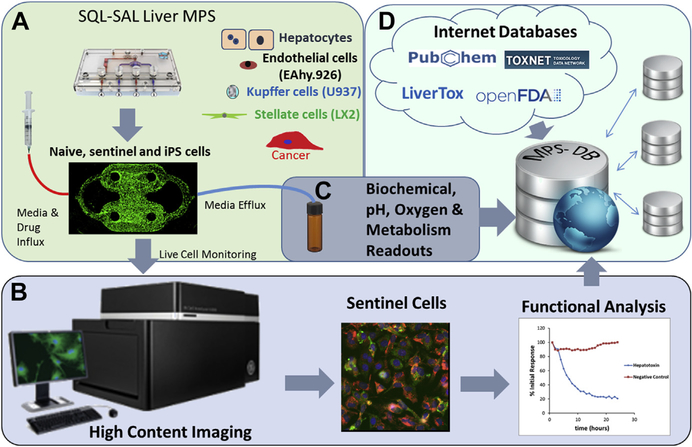Fig. 4.
Overview of the Human Liver Microphysiology Platform for studying human liver physiology, disease models and drug safety testing. The platform is composed of the following: (A) the Sequentially Layered, Self-Assembly Liver model (SQL-SAL) constructed from a microfluidic device and 4 human cell types, a fraction of which are “sentinel” cells expressing fluorescence-based biosensors, and that can include disease-specific cells, such as cancer cells. Data are collected from the model via (B) high-content imaging readouts of transmitted light contrast and fluorescence; and (C) biochemical and mass spectrometry readouts.48,51 (D) The multiplexed data are uploaded into the Microphysiology Systems Database (MPS-Db) to manage data, associate external data sources, and build predictive models of human efficacy and toxicity.50

